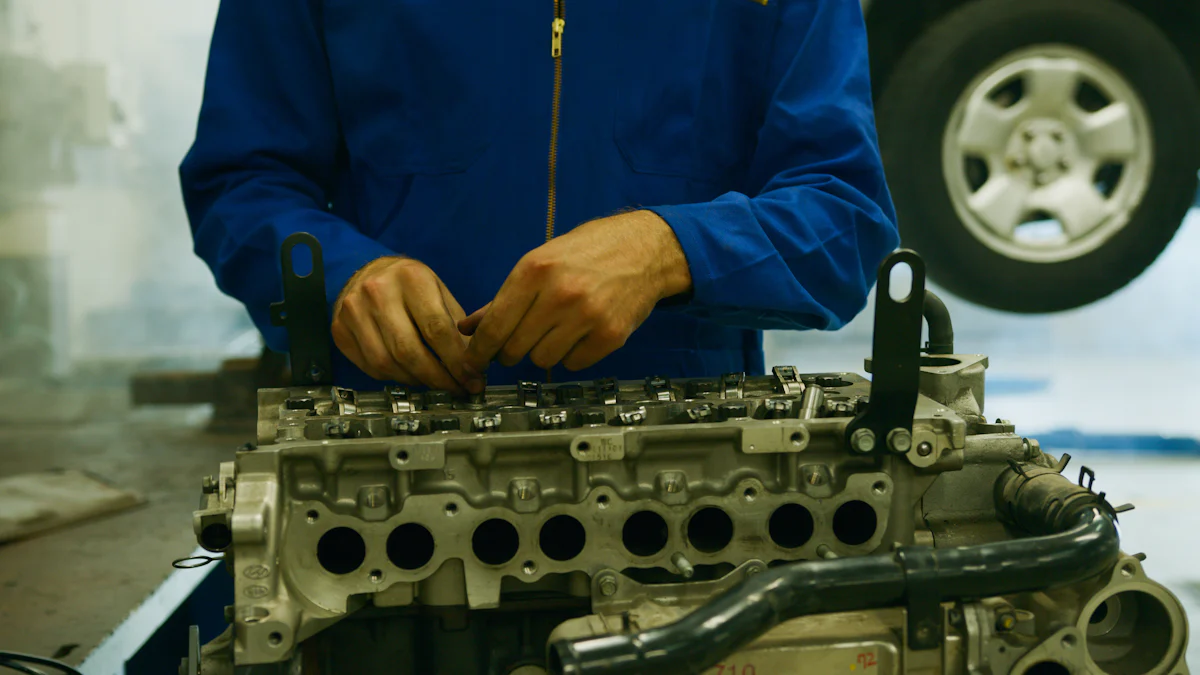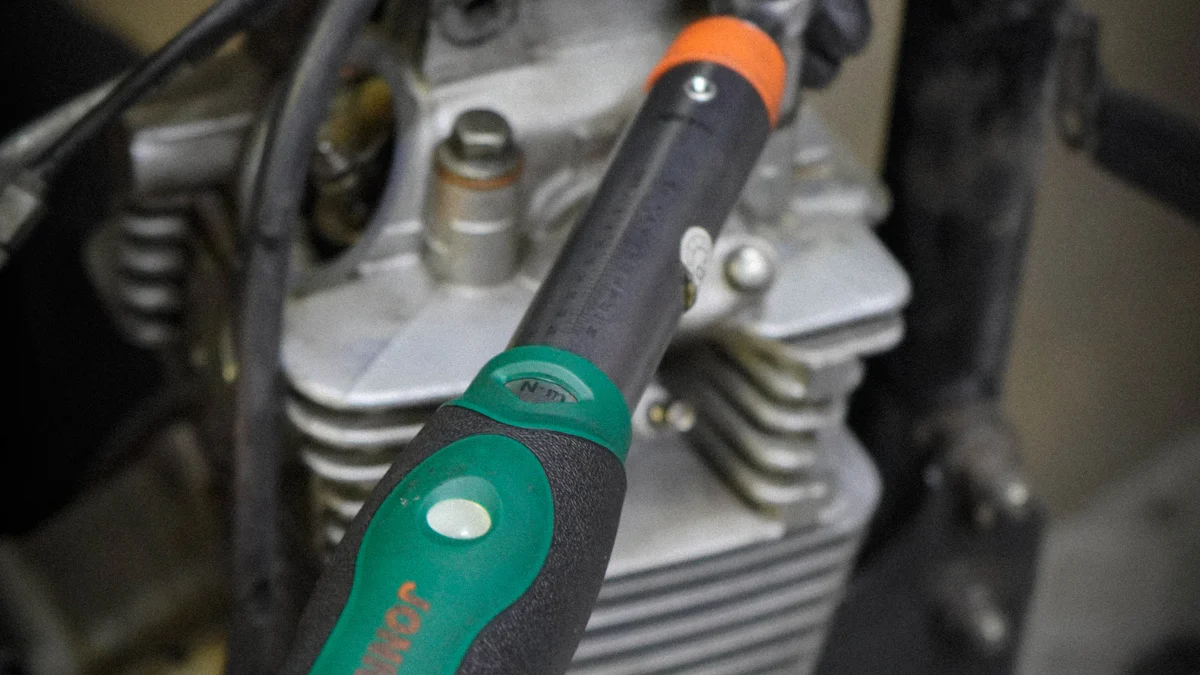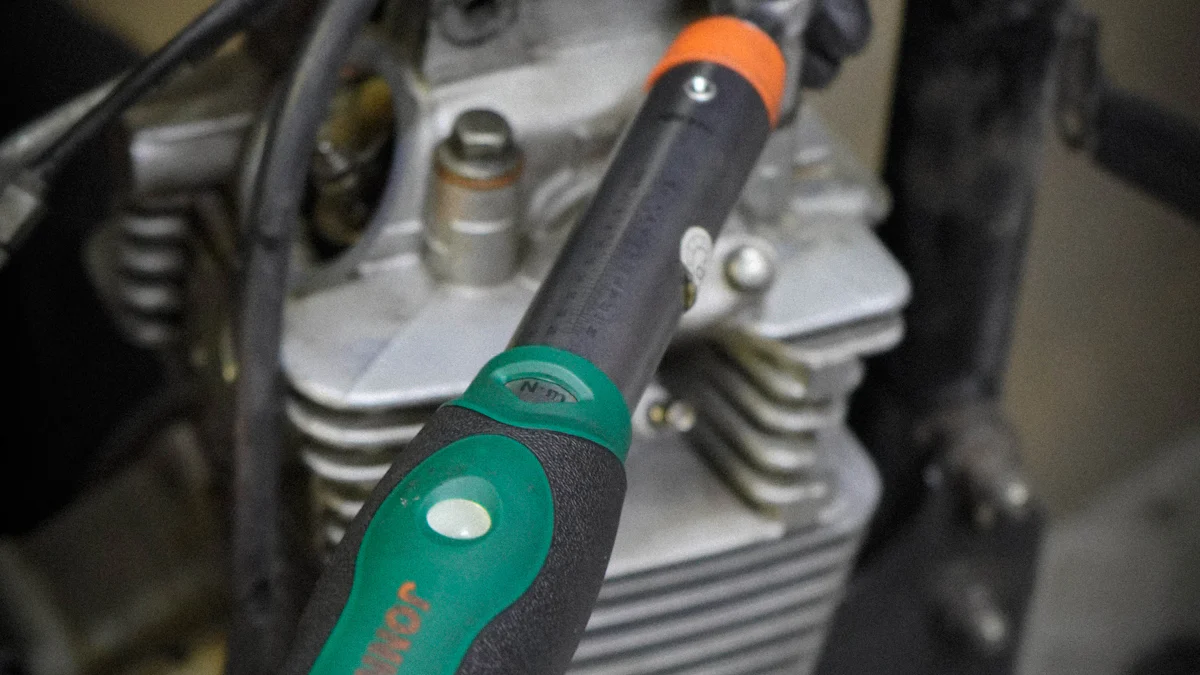
When it comes to the 3406E exhaust manifold torque, precision is paramount for optimal engine performance. Understanding the significance of proper torque ensures efficient airflow and temperature regulation in the engine exhaust manifold. In this blog, readers will delve into the specifics of torque values, essential procedures, and potential pitfalls to avoid. Unveiling the secrets behind achieving the recommended 35 foot pounds torque for the 3406E exhaust manifold nuts is crucial for maintaining peak engine functionality.
Importance of Proper Torque

When it comes to the 3406E exhaust manifold torque, precision is crucial for maintaining peak engine performance. Understanding the significance of proper torque specifications is fundamental in ensuring optimal functionality of the engine exhaust manifold. Let’s delve into the specifics to grasp why adhering to the recommended torque values is paramount.
Understanding Torque Specifications
Definition of torque
Torque refers to the rotational force applied during tightening, essential for securing components like the exhaust manifold in place. This force ensures that connections remain stable and leak-free, contributing to overall engine efficiency.
Role of torque in engine performance
The torque applied directly impacts the integrity of the exhaust system. By tightening fasteners with precision, you prevent leaks that could compromise engine function. Proper torque also aids in maintaining consistent pressure levels within the manifold, optimizing exhaust flow for enhanced performance.
3406e Exhaust Manifold Torque
Specific torque values for the 3406E
According to technical documents detailing Caterpillar‘s specifications, the 3406E exhaust manifold nuts should be torqued to 35 foot pounds. This specific value is critical for ensuring a secure connection that withstands engine vibrations and temperature fluctuations.
Impact of incorrect torque
Deviation from the recommended torque can have detrimental effects on engine operation. Insufficient torque may lead to loose connections, risking leaks that can affect exhaust flow and even cause damage to surrounding components. Conversely, excessive torque can distort threads or deform parts, compromising their longevity.
Page Bottom
Summary of key torque points
- Precision: Achieving the specified torque value guarantees a secure fit.
- Performance: Properly torqued connections maintain optimal exhaust flow.
- Prevention: Following correct torquing procedures helps avoid potential issues.
Reference to detailed steps below
For a comprehensive guide on executing precise torquing techniques for your 3406E exhaust manifold, refer to the step-by-step procedure outlined in this blog.
Step-by-Step Torque Procedure

Tools Required
To ensure the precise application of torque for your 3406E exhaust manifold, it is essential to have the right tools at your disposal. Here is a list of necessary tools and their significance in achieving optimal engine performance:
List of necessary tools
- Torque Wrench: A high-quality torque wrench is indispensable for accurately measuring and applying the specified torque values to the exhaust manifold nuts.
- Copper High Temp Antiseize: Applying this antiseize on the studs before installation helps prevent corrosion and ensures ease of future maintenance.
- Safety Gloves: Protect your hands with safety gloves to maintain a secure grip while handling tools and components.
- Socket Set: A socket set with various sizes will enable you to access and tighten fasteners efficiently.
- Ratchet Handle: Pairing your socket set with a ratchet handle allows for smooth and controlled tightening operations.
Importance of using the right tools
Utilizing the correct tools not only simplifies the torquing process but also guarantees accuracy and consistency in securing the exhaust manifold. The torque wrench, in particular, plays a pivotal role in preventing under or over-tightening, which could lead to potential issues down the line.
Torque Sequence
When tightening the 3406E exhaust manifold nuts, following a specific numerical sequence is crucial to ensure uniform clamping force distribution across all fasteners. Understanding this sequence and its importance can significantly impact the longevity and performance of your engine.
Numerical sequence for tightening
- Begin by torquing the nut at position 1 to the specified value, then proceed sequentially through positions 2, 3, 4, and so forth until all nuts are properly tightened.
- Adhering to this numerical order prevents uneven stress distribution on the manifold, reducing the risk of leaks or damage due to localized pressure points.
Explanation of the sequence’s importance
By systematically torquing each nut in a predetermined sequence, you establish an even compression load on the gasket interface. This uniform clamping force promotes effective sealing between components, safeguarding against exhaust leaks that could compromise engine efficiency.
Special Considerations
While most areas of the 3406E exhaust manifold can be easily torqued using conventional methods, certain sections may pose challenges that require alternative approaches for proper fastening.
Areas where a torque wrench cannot be used
- The small stud underneath: Due to limited space, utilizing a torque wrench directly on this stud may prove challenging.
- Nuts near thermostat housing: Accessing these nuts with a torque wrench might be obstructed by surrounding components.
Alternative methods for these areas
- For areas where direct torque application is impractical, consider using calibrated hand tools or adjustable wrenches to achieve approximate torque values.
- Implementing visual inspection techniques coupled with manual tightening can help compensate for inaccessible regions without compromising overall fastening integrity.
Common Mistakes and Tips
Avoiding Common Mistakes
When it comes to the 3406E exhaust manifold, overlooking essential details can lead to significant issues down the line. Mismatched fasteners are a common pitfall that can compromise the integrity of the entire assembly. Using incorrect torque values poses another risk, potentially resulting in leaks or damaged components.
To prevent these mishaps, meticulous attention to detail is paramount. Ensuring that all fasteners match the specified requirements is crucial for a secure and reliable connection. Likewise, adhering strictly to the recommended torque values safeguards against potential complications arising from under or over-tightening.
Tips for Success
In the realm of exhaust manifold maintenance, success lies in precision and consistency. To achieve optimal results, incorporating a few key practices can make a world of difference. Double-checking torque values before finalizing the installation process serves as a critical quality control measure.
Moreover, maintaining uniform torque application across all fasteners is essential for preventing uneven stress distribution within the manifold. This approach not only enhances the longevity of gaskets and seals but also promotes efficient exhaust flow throughout the system.
By heeding these tips and steering clear of common mistakes, enthusiasts and professionals alike can elevate their engine maintenance practices to new heights of excellence.
Recalling the critical role of proper torque in engine maintenance, achieving the recommended 35 foot pounds for the 3406E exhaust manifold nuts is paramount. Following a meticulous step-by-step procedure, including utilizing essential tools and adhering to a specific torque sequence, ensures optimal performance. By prioritizing precision in torque application, enthusiasts can safeguard against potential leaks and component damage, ultimately enhancing engine longevity and efficiency.
Post time: Jun-05-2024



